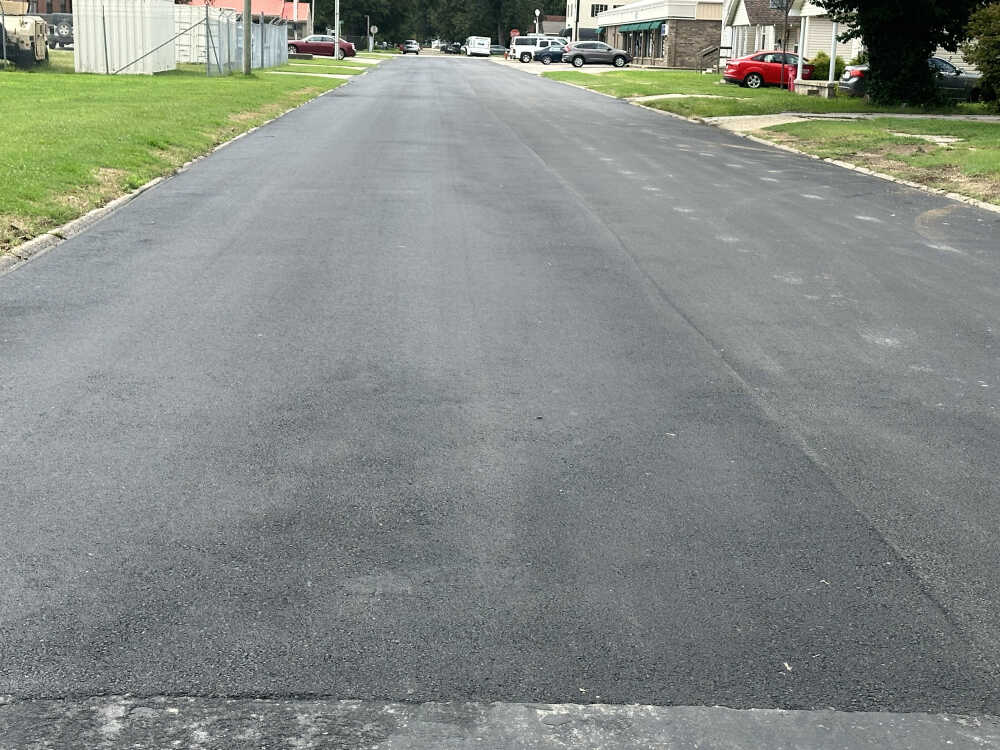Improvements to old WPA roads in Sikeston proves challenging

SIKESTON — Between 1939-43, many roads were put in across the Midwest as part of the WPA, or Works Progress Administration. Now, those roads are starting to deteriorate, leaving many with questions of how to improve them.
The roads as part of the WPA program were made of concrete. Now as they deteriorate, the cost to replace the roads with concrete is too high, which isn’t practical.
“If the only answer, is you have to completely take out a concrete street and reconstruct it with another concrete street, we can’t afford that,” said Sikeston Public Works Director Jay Lancaster. “We might be able to do one small stretch of street a year and that’s not a reasonable approach.”
The problem arises when the street is strong, but not smooth. Lancaster said many of the WPA streets, especially those in residential areas with low traffic, fall in that category with cracking and smoothness issue.
On an asphalt street, the top layer can be skimmed off, called milling. Then it is filled back in with something like blacktop to make it smooth.
Unfortunately, a street made of concrete is too strong to mill, and if tried, will tear up equipment.
“(The concrete is) hard to cut and it’s also impossible to grind,” Lancaster said. “But these low volume residential streets, we can’t afford to tear all this out.”
So, Lancaster spoke with many experts including civil engineers, the Missouri Concrete Paving Association, university professors, MoDOT’s paving engineering staff and paving contractors to find the best method to use.
After speaking with the experts, Lancaster said they are milling what they can do and then putting an asphalt overlay to try and create a smoothness on the roads without concrete repair. Some of the roads that have been done this way this summer include Kathleen, Hardin, and Matthews.
“Will it accomplish what we want? We don’t know. It’s an experiment,” Lancaster said. “Our hope is that this proves to be an acceptable method of rehabilitation and we can do this on other similar, low volume, residential roads.”
Lancaster added that by overlaying the WPA roads, in some situations, it does raise the elevation of some of the surfaces.
“While we do understand it will have a small impact, we felt like giving all consideration that it was still the best method and our consultants felt it would have minimal impact on drainage to an acceptable amount,” Lancaster said.
Some residents say they were told years ago that concrete streets would stay concrete streets, but Lancaster said that isn’t practical.
“We are trying to figure out how to best maintain those type streets given our budget challenges and unfortunately, it’s not practical to tear out low volume concrete streets and replace them with concrete streets or we would never catch up. We would never keep up with the pace of roads going bad,” Lancaster said.
If the experiment works, Lancaster said it doesn’t mean that if you live on a WPA road it will be done next.
He said they will evaluate condition versus traffic volume and try to schedule some more but that it isn’t an exact science.
“There could be some WPA roads that either due to poor condition or poor strength or higher traffic volumes, may have to be reconstructed and won’t be overlayed,” Lancaster said, adding there is a scientific component of looking at all the different factors.
“It’s not being done loosely and haphazardly,” Lancaster added. “It’s after conversations with multiple experts. If it does work, we’re going to do it in other places but not necessarily everywhere, depending on factors. But we will use every tool available to us to try and provide good quality roads for our residents.”

